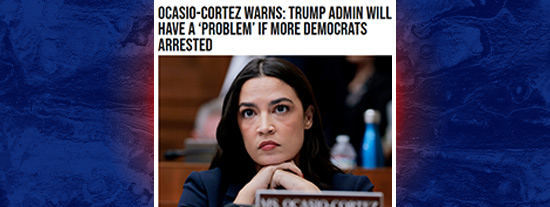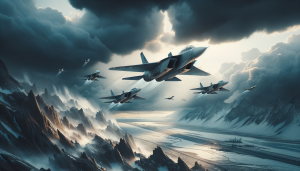Drunk, unruly Russian troops sent to die on front lines in punishment squads: report

According to a recent report, Russian soldiers who are insubordinate or are found to be drinking are sent into punishment squads called “Storm-Z”. They are then sent to the most dangerous areas of the front line where they will likely die.
Reuters reported Tuesday that at least five of these penal units, staffed with ex-convicts, noncompliant soldiers, and other troops, had been thrown into the most intense fighting to resist Kyiv’s offensive in the east and south of Ukraine this summer. The report was based on interviews with 13 sources familiar with the situation.
One soldier of army unit 40318 said, “Storm Fighters are just meat.” In May and June, 40318 was stationed near Bakhmut (in eastern Ukraine).
He claimed to have given medical attention to six or seven “Storm-Z”, fighters who were injured on the battlefield. This was in defiance of an order by a commander that the wounded be abandoned.
|
The soldier claimed, under condition of anonymity to avoid reprisals, that “if the commandants find anyone with alcohol on their breath they immediately send them straight to the Storm squads”.
Reuters has conducted an investigation that includes anonymous interviews with five members of the “Storm-Z squads” to gain a better understanding of how these units are used in battle.
Each “Storm-Z squad” is made up of 100-150 fighters, and they are embedded in regular army units. They are usually sent to the most vulnerable parts of the front line, which results in heavy casualties.
A soldier who was recruited out of prison, where he had been serving time for a theft conviction told Reuters that 105 men from his “Storm Z” unit embedded with 237th Regiment were killed or injured in the fighting near Bakhmut, in June.
According to the interviewees, the penal squads combine prisoners who are willing to fight for a promise of pardon in exchange for a promise of remission with regular soldiers punished for infractions such as drinking or other offenses.
Conflict Intelligence Team (CIT), an independent organization tracking the war, says that “Storm-Z squads” are useful as they can be used to provide cannon fodder.
The group said that the Storm fighters were only sent to the most hazardous parts of the front in both defense and attack.
The Institute for the Study of War in the US, a prominent think tank, first reported on the existence of the “Storm-Z squads” back in April, when it cited what they said was a leaked Russian army report about the formation of the squads.
On Friday, President Vladimir Putin referred to former convicts serving in the regular military. He said that during a meeting televised with troops he knew that two of his comrades were killed in combat.
Putin said that the convicts had absolved their own guilt and given their lives to the motherland. He added that their families would receive assistance.
According to court documents and two of Artyom’s relatives, Artyom, a 29 year-old man from central Russia’s Mordovia, was serving a 2-year sentence for robbery when military recruiters asked if he wanted to fight in Ukraine.
He wanted to clean up his criminal record, and earn money to renovate his family home.
Shchikin’s relatives said that by May Shchikin had been assigned to a penal group within the 291st Guards Motorized Rifle Regiment, and was deployed to Zaporizhzhia in southern Ukraine where Kyiv is trying to penetrate Russian defenses.
Shchikin last spoke to his relatives on June 18, His unit’s positions were attacked by Ukrainian fire a few days later. The relatives of Shchikin said that three of his comrades in the trench were killed and another’s hand was severed. Shchikin is still missing.
The family of the deceased man contacted the Defense Department to seek answers. Their questions were mostly ignored.
They were members of a Storm unit. “No one will be in a hurry for them,” said a relative.
Some families, unable to get answers on the fate of their loved one through official channels have turned to social networks. They posted photos of missing soldiers on a Russian platform called “V Kontakte”, in a group called “Storm-Z”, and asked anyone with information about their location to contact them.
According to two servicemen, “Storm-Z’ units include not only convicts who are seeking a pardon but also regular soldiers who were pressed into punishment squads because they were drunk or drugged on duty or refused to follow orders.
According to Russian military law, a soldier cannot be transferred into a penal unit until he is convicted by an army court. Reuters was told by no one that any of the soldiers sent to the “Strom-Z squads” had ever appeared in court.
A group of around 20 “Storm Z” fighters from Zaporizhzhia staged an uprising over the summer. They released a video of their revolt on June 28 and said that they would not return to the front line because of how they were treated.
“On the frontline where we were, we didn’t get ammunition deliveries. We didn’t get food or water. The wounded were not taken away. Even now, the dead are still rotting,” said one of the fighters in the video. It was released by Gulagu.net – a Russian prisoner’s rights group based in France.
He added, “We are given orders that we can’t even carry out.” The squad member was upset that they refused to carry out any more combat missions.
According to relatives of two fighters, after the release of the video, Russian military police officers beat members of the squad. However, conditions have improved since then.
The Telegraph reported that Serhii Cherevaty was a spokesperson of Ukraine’s Operational Command East and said in June there were over 170,000 “Storm-Z ” fighters within their “operational zones.”









No Comments